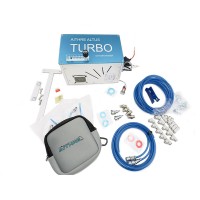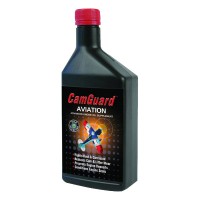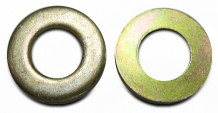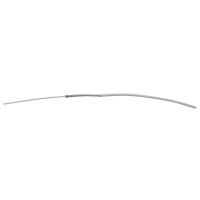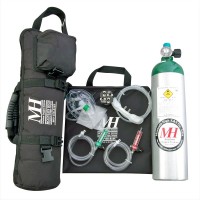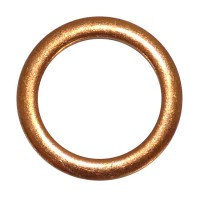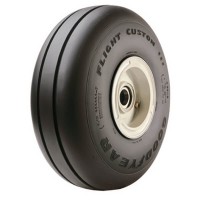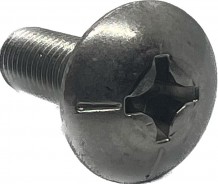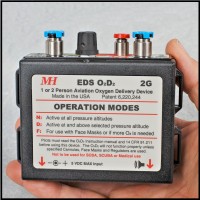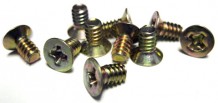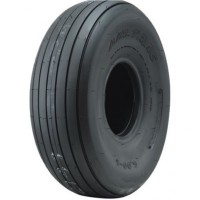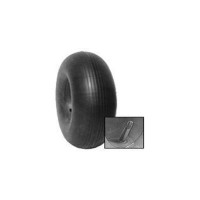1-877-795-2278 | info@aircraftspruce.ca
Aircraft Spruce Canada
Brantford, ON Canada
Corona, CA | Peachtree City, GA
Chicago, IL | Wasilla, AK
Aircraft Spruce Canada
Brantford, ON Canada
Corona, CA | Peachtree City, GA
Chicago, IL | Wasilla, AK
THE AVIATION SUPERSTORE FOR ALL YOUR AIRCRAFT & PILOT NEEDS | 877-795-2278
Aithre Turbo Portable Oxygen Maker
$3994.00/Each
Part# 11-20336
MFR Model# ATO2G02PP
MFR Model# ATO2G02PP
- JUMP TO
- Overview
- Features
- In The Box
- Reviews
- Q&A
Overview
|
The Aithre Turbo Oxygen Maker is the World's first oxygen generator optimized specifically for light aircraft and general aviation. Say goodbye to awkward oxygen cylinders, complex regulators, and expensive transfilling equipment, and the inconvenience of oxygen filling. Free yourself from the limits that industrial oxygen suppliers and medical-style tanks have imposed on your flights, and experience freedom to climb and travel - safely. With enough oxygen supply to circumnavigate the World many times, the Aithre Turbo Oxygen Maker will unlock your aircraft potential and support your mission, no matter where it takes you.
HOW IT WORKS The Turbo concentrates oxygen real-time while you fly, anytime, anywhere, using a fraction of the capacity of most general aviation electrical alternators, up to 18k MSL for one person and up to 15k MSL for two people. Based on proven pressure swing adsorption technology (PSA), and optimized for general aviation application, the Aithre Turbo packs a punch with continuous 93%-99% pure oxygen at 1 LPM using just 6 amps or 80 watts using standard 12-14V aircraft power. A high-performance compressor pump is used to pressurize intake air and feed it through zeolite sieve beds. The sieve beds retain the nitrogen in the air and pass oxygen through the adsorption technique (PSA). PSA is a proven method of oxygen generation in the medical field, but the Turbo is different in that it operates above 10k MSL where the air is thinner. NO BATTERY TO CHARGE Unlike medical portable oxygen concentrators, the Aithre Turbo does not use a Lithium battery. Instead, the Aithre Turbo relies exclusively on ship power 12-14V, using the aircraft battery or engine-driven electrical alternator. At just 80W or approximately 6 amps at 14V supply, the Turbo will fit within virtually any alternator capacity and this results in reduced maintenance, a longer service life, and increased flight safety. To address the risk of electrical failure affecting oxygen supply, the Turbo kit can be supplemented with one of Aithre's tumbler-sized backup carbon fiber composite oxygen bottles. DC JACK STANDARD - 12V CIGARETTE ADAPTER OPTIONAL The Aithre Turbo Portable variant comes standard with a DC barrel-type jack and matching FAA-approved female plug. However, because many aircraft already include a 12V cigarette-style power plug, an adapter is available and sold separately, which converts the standard DC barrel-type jack to a male cigarette plug so that the Turbo can be used without any electrical modification to the aircraft. The same optional cigarette-style plug also supports use of the Turbo in a vehicle while traveling. SMALL FOOTPRINT AND WEIGHT With a ridiculously small footprint of 22.5 cm x 14.5 cm x 15 cm and a weight of just 6.8 lbs., the Aithre Turbo will free up space, expand your useful load, all while delivering a non-stop supply of oxygen. PORTABLE VARIANT FOR CERTIFIED AIRCRAFT OR EXPERIMENTAL AIRCRAFT The portable variant of the Aithre Turbo is designed to operate with our FAA approved Aithre DC power cannon plug, or using a 12V cigarette-style adapter (sold separately). The Aithre DC power cannon plug is installable in any Part 23 aircraft or experimental aircraft under NORSEE, as a minor alteration and requires only an A&P logbook entry. The Aithre DC power cannon plug exposes 12-14V ship power and is positionable at any convenient location within the aircraft for powering the Aithre Turbo as a portable unit. The Aithre Turbo portable variant includes a male DC power connection that engages the installed DC power cannon plug. The cannula(s) are plugged directly into the Aithre Turbo portable variant and the O2 button provides a convenient on/off control, with ship power obtained via the Part 23 approved power receptacle. The Aithre Turbo portable variant further includes a slotted extension on the base and back for securing the Turbo housing using a seatbelt or other strap in the aircraft. HEALTVHIEW, AITHRE CONNECT iOS, AND AVIONICS SUPPORT Aithre has pioneered the integration of health biometrics into the avionics of the aircraft, and the Turbo is no exception: the Turbo constantly monitors flow, temperature, altitude, and faults. The Aithre Turbo portable variant is fully supported by the Aithre Connect iOS app, which acts as a relay to the Healthview avionics system, for additional real-time flow rate, temperature, humidity, and state monitoring. CONCENTRATION MONITORING The oxygen concentration produced by the Aithre Turbo is >93% for 2000 hours or 2 years, whichever comes first. There are two primary methods to verify the concentration and ensure that the Turbo is operating correctly, using the Aithre Illyrian II wearable oximeter and using a portable oxygen concentration tester. Continuously measured blood oxygen provides a direct indication of the sufficiency of breathing oxygen during flight. The Aithre Illyrian II is the only haptic wearable that provides a continuous readout of blood oxygen to modern avionics, the Aithre Healthview, the Aithre Connect iOS app, and via the native haptic vibratory alerts. It is the best way to monitor your blood oxygen and the verify the flow, concentration, and operation of the Turbo oxygen maker. Additionally, a portable oxygen concentration tester can be used on the ground prior to flight to test the flow and purity of oxygen generated using the Aithre Turbo. The test is simple and takes just seconds to perform using an Aithre provided oxygen concentration tester. The Aithre Illyrian II and portable oxygen concentration tester are not included with the Aithre Turbo and must be purchased seperately. MAINTENANCE Nothing is airborne for free, but operation of the Turbo is very cost-effective as compared to regular FBO transfilling costs. With the Aithre Turbo, there is a sieve bed replacement that will need to occur every 2 years or 2000 hours of usage to ensure high purity oxygen generation. An Aithre approved service center will accept your Turbo via mail, switch out the sieve beds, and verify technical parameters including flow, temperature, and oxygen concentration. A complete list of Worldwide authorized service centers is available under the main menu of our website. SAFETY There are a number of significant safety benefits of the Aithre Turbo. Notably, the Aithre Turbo does not itself store any pure oxygen so the risks associated with carrying, transporting, and filling pressurized oxygen vessels can be completely eliminated. Additionally, the Aithre Turbo does not include any Lithium battery. While portable oxygen concentrators designed for medical purposes rely upon a Lithium battery, this is unacceptable for aviation environments due to the combination of pure oxygen, heat, and battery fire risk. The Turbo relies instead on clean continuous power directly from the aircraft alternator, ship battery, and any backup ship battery available. Other safety features include Tefzel internal wiring, dual high speed cooling fans, over temperature monitoring with over temperature shutdown, and capacitive noise reduction. COMBINABLE WITH ADDITIONAL TURBO UNITS The Turbo is a 1 or 2 place system. However, with only an 80W power requirement, it is possible to build a 4-place or 6-place system with multiple independent Turbo systems. For instance, one Turbo may be setup for the left side of an aircraft and another Turbo may be setup for the right side of the aircraft. A 6-place aircraft can be similarly configured assuming additional amperage is available. HYBRID OXYGEN SYSTEM The Turbo can be combined with an AVI24 or AVI64 built-in on-demand bottled oxygen system to create a redundant source of oxygen or to make a hybrid 4 or 6 place system. OPTIONAL BACKUP CARBON FIBER COMPOSITE OXYGEN BOTTLE For casual use of the Aithre Turbo Oxygen Maker up to and around 12.5k MSL, the serious risks of hypoxia and oxygen deprivation are relatively low and failure of any part of the Turbo or electrical system can be dealt with by descending. However, if you plan on using the Turbo for oxygen regularly above 12.5k MSL, it is advisable to consider a small backup pressurized bottle. The Aithre Turbo installed variant includes an emergency kit with plumbing and a backup cannula plug for connecting to a remotely mounted backup pressured oxygen bottle. The bottle is not included as there are two options to select from: 47L and 152L. Alternatively, a simple Aithre fixed flow 47L or 152L flight bag style oxygen bottle may be used for emergency backup. These lightweight carbon fiber composite bottles provide for 2 and 6 hours of continuous flow at 0.5 LPM for an added layer of safety. |
Features
- Up to 18k MSL for one person and up to 15k MSL for two people (Illyrian II SPO2% determine personal altitude limits)
- >93% O2 purity for 2000 hours or 2 years at 1 LPM
- 12-14V direct aircraft power, 80 Watts (6 Amps at 14V)
- 6.8 lbs.
- 22.5 cm x 14.5 cm x 15 cm housing dimensions
- Push button activation
- Integrated flow, pressure altitude, humidity, and temperature monitoring
- Twin dual ball bearing cooling fans
- Over-temperature protection and fault outputs
- Aithre Connect iOS compatible
- 2 year consumable lifetime with mail-in service
In The Box
- Aithre Turbo oxygen maker
- Aithre silicone cannulas (2)
- Aithre neoprene cannula pouch
- DC power cannon plug and placard
Q&A
Please note, Aircraft Spruce Canada's personnel are not certified aircraft mechanics and can only provide general support and ideas, which should not be relied upon or implemented in lieu of consulting an A&P or other qualified technician. Aircraft Spruce Canada assumes no responsibility or liability for any issue or problem which may arise from any repair, modification or other work done from this knowledge base. Any product eligibility information provided here is based on general application guides and we recommend always referring to your specific aircraft parts manual, the parts manufacturer or consulting with a qualified mechanic.

 Aircraft Spruce Canada
Aircraft Spruce Canada
























